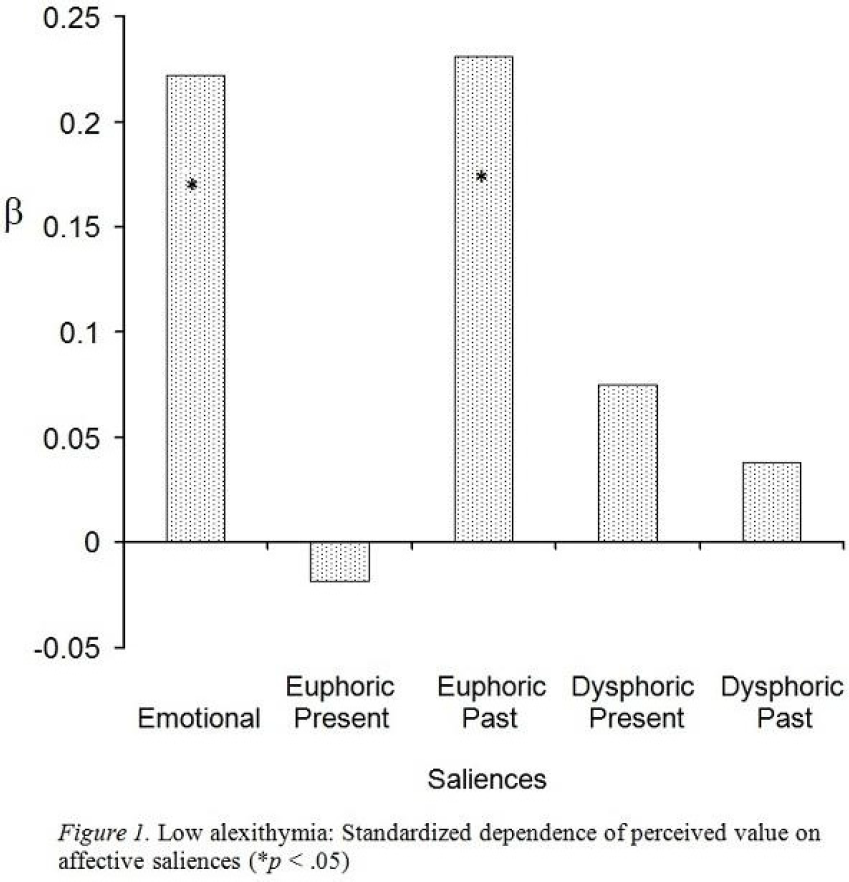No CrossRef data available.
Published online by Cambridge University Press: 15 April 2020
Evidence associates alexithymia with a range of psychopathology including, in particular, depression.
To investigate whether alexithymia is linked to enhanced levels of dysphoric salience in the individual's environment.
To determine whether item selection among individuals with lower and higher levels of alexithymia is sensitive to euphoric and dysphoric linkages.
A set of items was selected by each participant (N = 106), and for each item its perceived value established via the relation v(i, n) = (n - i)/(n - 1). A set of five affective saliences was elicited for each item.
Regression established that whereas perceived values for lower levels of alexithymia were associated with emotional comfort and past happiness, for higher levels they were associated with present sadness (Figures 1 and 2).
Fig. 1
Low alexithymia: Standardized dependence of perceived value on affective saliences (*p < .05)

Enhanced salience of present sadness in the judgements of those with higher alexithymia levels may play a role in depression.
Comments
No Comments have been published for this article.